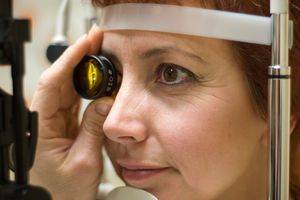February is Low Vision and Age-Related Macular Degeneration awareness month.
Low vision describes a set of conditions in which there is significant visual impairment which can not be corrected with traditional means such as glasses, contact lenses, medication or eye surgery. Low vision includes a loss of visual acuity which can?t be corrected to better than 20/70, significant visual field loss such as tunnel vision or blind spots, legal blindness (20/200 or less visual acuity in the better eye) and almost total blindness.
While it can affect both children and adults, low vision is most common in the elderly. Since vision is significantly impaired and can?t be corrected the condition requires significant adjustments to daily life. Here are some facts about the condition and tips for coping with it on a daily basis.
What causes low vision?
- Eye diseases such as: glaucoma, macular degeneration, cataracts, diabetic retinopathy, and retinitis pigmentosa
- Eye injury
- Heredity
How does low vision affect daily life?
While people with low vision are not considered to be totally blind, often the poor quality of their vision makes it incredibly challenging to complete common daily tasks including reading, writing, cooking and housework, watching television, driving or even recognizing people. The adjustment can be especially for those who suddenly lose their vision.
The good news is there are numerous resources and products available to assist individuals with low vision often by enhancing the small amount of vision that is intact.
Visual Aids
Visual aids enable millions of people who suffer from low vision to be able to function and live relatively normal lives, by maximizing their remaining eyesight. An optometrist can do a low vision eye exam and provide specialized glasses or tints to optimize vision, or recommend quality magnifiers with appropriate magnification and working distance. Full spectrum lighting or magnifiers with an attached light source are often used to aid individuals with low vision. You can also get special lens tints, which are used to enhance contrast and reduce glare, with special coatings for specific conditions. Other low vision aids act as guides to help the person focus on non-visual cues, such as sound or feel.
Many people unfortunately try a ?trial and error? or “dollar store” readers or magnifiers when it comes to vision aids which can lead to frustration. In fact, there is a systematic approach
to finding the right visual aid, which is a matter of consulting with a professional to determine what works for each individual and his daily needs. Speak to your optometrist about the best place to obtain quality, optical and non-optical aids to assist with your low vision.
If you or a loved one suffers from low vision, here are some ways to make life with low vision easier
- Adjust Lighting. Ensure that your home is well lit. This may require some trial and error with different lights and voltages to determine what works best for you.
- Use a magnifier. There is a vast selection of magnifiers available, ranging from hand-held to stand magnifiers. Binoculars and spectacle mounted magnifiers are also an option.
- Your optometrist or low vision specialist can recommend specialized lens tints for certain conditions such as retinitis pigmentosa or cataracts, which enhance vision or reduce light sensitivity.
- Use large print books for reading. Alternatively, try digital recordings or mp3s.
- Make use of high contrast for writing. Try writing in large letters with a broad black pen on a white piece of paper or board.
- Add a high-contrast stripe on steps (bright color on dark staircase, or black stripe on light stairs) can prevent falls in people with low vision, and may enable those who suffer to remain independent in their home.
- Find out what other technology is available to help make your life simpler.
If you or a loved one has low vision, don?t despair. Be sure to consult with your eye doctor about the best course of action to take to simplify life with low vision.
